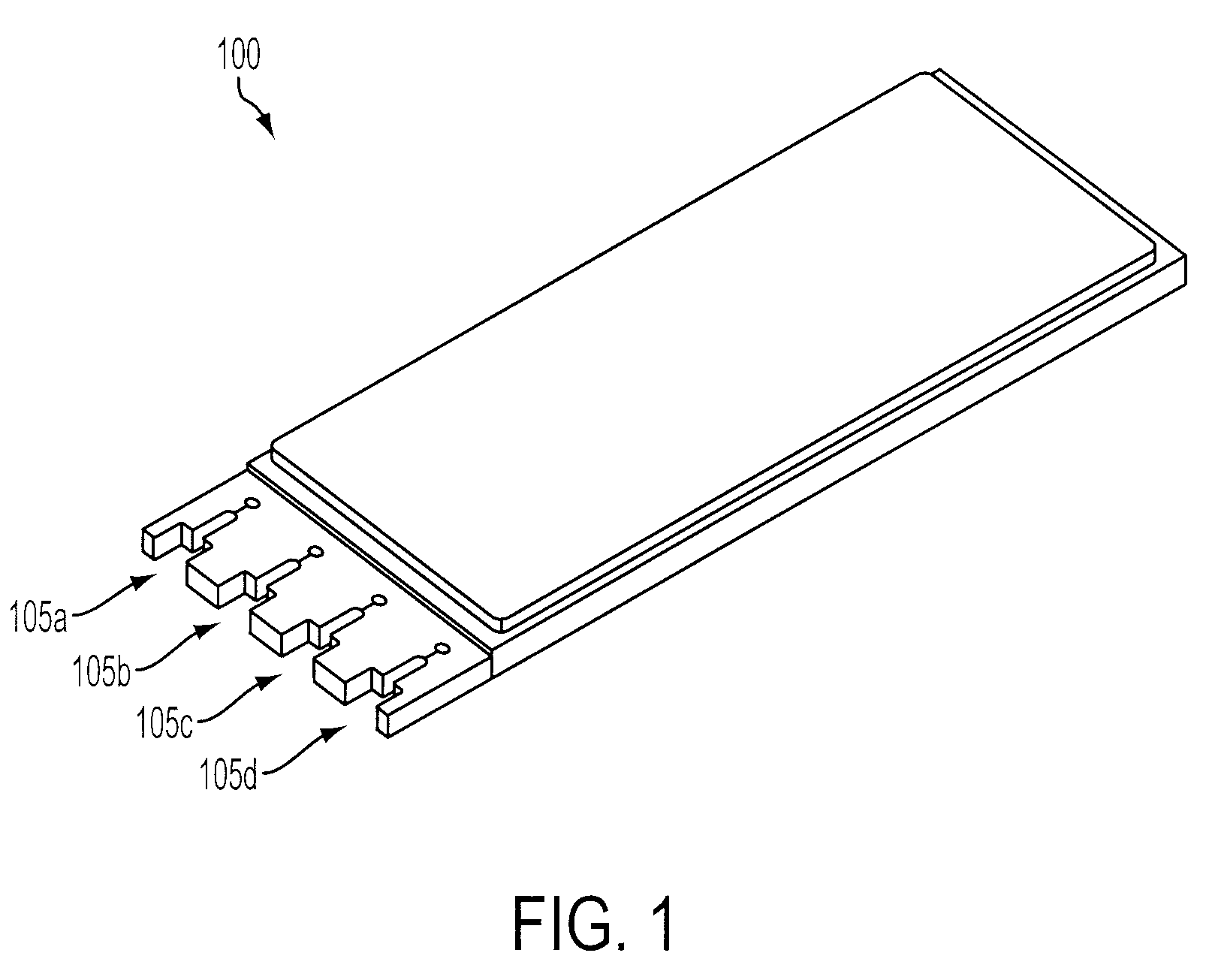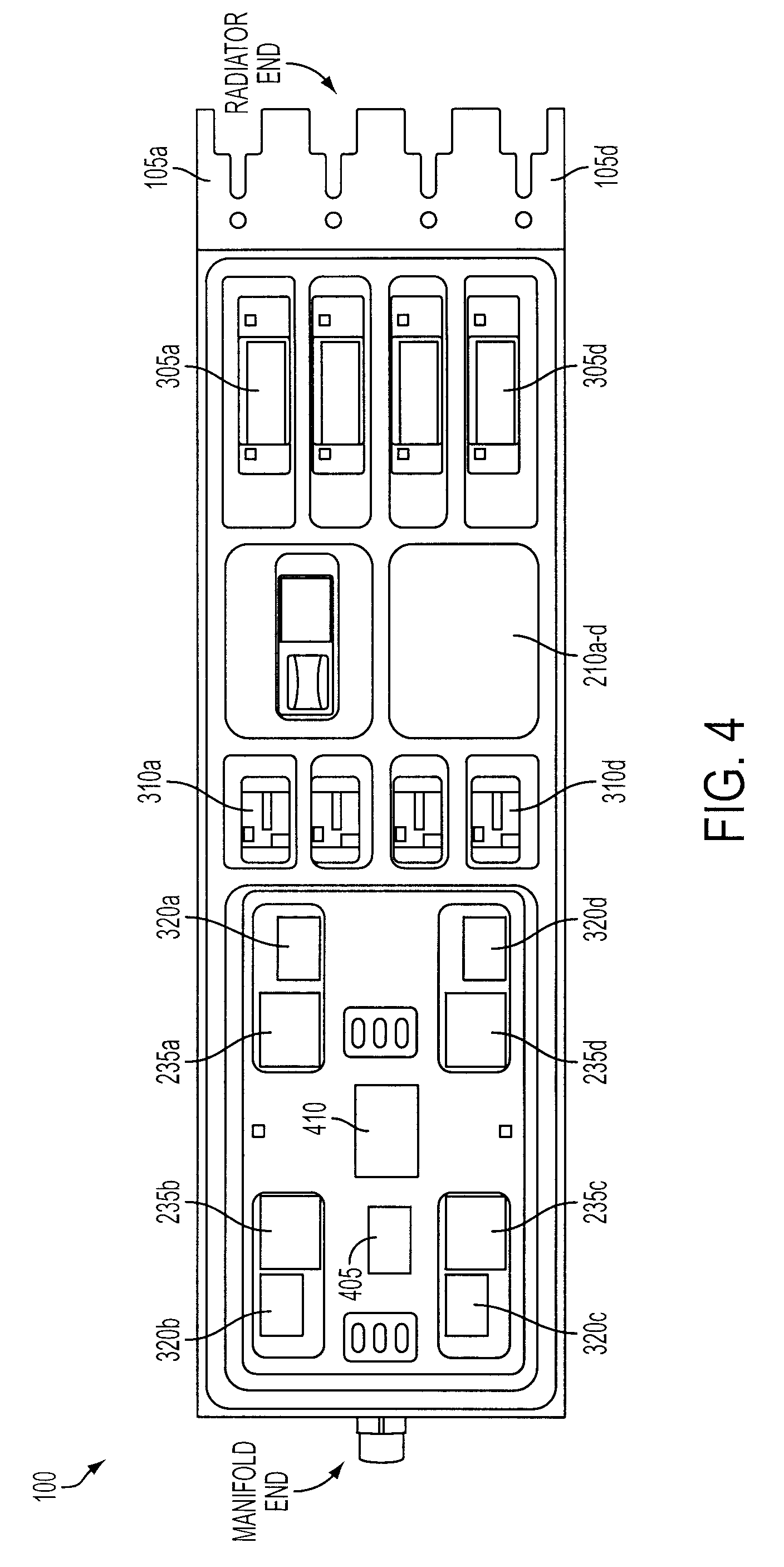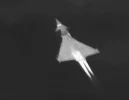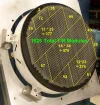Install the app
How to install the app on iOS
Follow along with the video below to see how to install our site as a web app on your home screen.
Note: This feature may not be available in some browsers.
You are using an out of date browser. It may not display this or other websites correctly.
You should upgrade or use an alternative browser.
You should upgrade or use an alternative browser.
Gripen E/F
- Viestiketjun aloittaja Huhta
- Aloitus PVM
Viimeksi muokattu:
Gyllis1
Respected Leader
Katso liite: 8794 Btw pikkuisen kyllä taitaa olla nuo luvut vanhoja, 81:ssä yli 1600 moduulia. 77 jossain 2000 moduulin kieppeillä
1600 on yli tuhat
Ja apg81 on northropin tekemä
Edit, tuo video on vuodelta 2009
Raytheon sanoo, että APG-81 "over one thousand".
1600 on yli tuhat

Ja apg81 on northropin tekemä
Edit, tuo video on vuodelta 2009
Gyllis1
Respected Leader
Tuo moduulimäärä ei tosin vielä tutkan suorituskyvystä koko totuutta kerro. Noiden moduulien teho on noin 10-25 watin välillä ja punaleima kamaa. GaN moduuleilla tullaankin sitten tulevaisuudessa pääsemään lähemmäs 50W tehoja per moduuli. Gripenissä rajoituksia asettaa suht pieni nokkakartio, sinne ei esim tuollaista APG-81:n kokoista tutkaa ahdeta
Viimeksi muokattu:
Sarek1
Ylipäällikkö
Se on good old GaAs. Vain EW-kikottimet on GaN.
http://saab.com/region/india/about-.../gripen-es-electronic-wizardry-is-the-future/
Sry, kirotusvihre. Pilkku puuttui ja merkitys muuttui: "...GaN, sivuskannaava AESA tutka". Nakkisormet ja pastillilaite...
EDIT: Gripenin ja samoin myös Rafalen nokkakartio on selvästi pienempi kuin esim. F-15:n ja F-35:n tai itäkoneiden. Koneiden koossa ja painoissa on aika selvä ero etenkin Gripeniin verrattuna. Tutkien hyvyydestä on nojatuolista vaikea sanoa mitään kun punainen leimaväri tunkee heti esille, mutta periaatteessa samaa teknologiaa edustavalla suuremmalla tutkalla ja suuremmalla teholla saadaan suurempi mittausetäisyys.
Saabin ratkaisussa, jossa tutka-antenni voi keilata laajemmalle alueelle sivusuunnassa, on pyritty kasvattamaan potentiaalista näkökenttää ilman, että koneen liikesuuntaa tarvitsee muuttaa tai säilyttämään saatu tutkakontakti vaikka koneen liikesuuntaa muutetaan. Onko tuollainen ominaisuus hyvä? On. Onko Gripenin sivuskannaava tutka hyvä? Vaikea sanoa, todellinen ja vertaileva tieto muihin kilpailijoihin puuttuu. Tutka on osa konetta ja kaikkien koneen järjestelmien ja käyttöliittymän kokonaisuuden toimivuus ja luotettavuus ratkaisee sen, kuinka hyvä tai huono paketti on.
Viimeksi muokattu:
http://aviationweek.com/defense/saab-says-it-ready-produce-gan-radar-sensor
"Saab says it is ready for volume production of a fighter radar using gallium-nitride (GaN) technology in an active, electronically scanned array (AESA)."
"Saab says it is ready for volume production of a fighter radar using gallium-nitride (GaN) technology in an active, electronically scanned array (AESA)."
Sarek1
Ylipäällikkö
http://aviationweek.com/defense/saab-says-it-ready-produce-gan-radar-sensor
"Saab says it is ready for volume production of a fighter radar using gallium-nitride (GaN) technology in an active, electronically scanned array (AESA)."
Jos/kun tuo toteutuu, otan sen pilkun pois.

Gyllis1
Respected Leader
Jos/kun tuo toteutuu, otan sen pilkun pois.
Siinä vaiheessa kun saat ottaa pilkun pois, GaN on löytänyt tiensä muihinkin aesa tutkiin.
Sarek1
Ylipäällikkö
Siinä vaiheessa kun saat ottaa pilkun pois, GaN on löytänyt tiensä muihinkin aesa tutkiin.
Ei kai se keneltäkään pois ole jos tutkien ominaisuudet paranevat? Jos tämä GaN teknologian leviäminen tapahtuu ajoissa HX-ehdokkaiden keskuudessa, Ilmavoimat ovat se, joka hyötyy kehityksestä. Oma suu ennen kontin suuta.

Gyllis1
Respected Leader
Ei kai se keneltäkään pois ole jos tutkien ominaisuudet paranevat? Jos tämä GaN teknologian leviäminen tapahtuu ajoissa HX-ehdokkaiden keskuudessa, Ilmavoimat ovat se, joka hyötyy kehityksestä. Oma suu ennen kontin suuta.
Juu ei ole keneltäkään pois, sai vaan sellaisen kuvan että olisi hetipian tulossa Gripeniin.
Tuota artikkelia joka linkitettiin ei pääse lukemaan kokonaan jos ei ole tilaaja, koko versiossa ilmeisesti tällainen pätkä:
"The sensor has not been created for the Gripen E/F, because that aircraft is under development with the Selex Raven AESA radar, which uses gallium arsenide."
Pidä se pilkku vaan missä se on

Viimeksi muokattu:
Gyllis1
Respected Leader
Saabin katse kohdistettu Afrikkaan. Botswanassa, Namibiassa ja Keniassa nähdään potentiaalia
http://www.di.se/artiklar/2015/6/16/saab-ser-potential-i-afrika/
http://www.di.se/artiklar/2015/6/16/saab-ser-potential-i-afrika/
fulcrum
Greatest Leader
Btw pikkuisen kyllä taitaa olla nuo luvut vanhoja, 81:ssä yli 1600 moduulia. 77 jossain 2000 moduulin kieppeillä
Edit kuvassa siis AN/APG-81, F-35:n tutka
Modulien määrä ei ilmeisesti ole suoraan noiden 'piikkien' määrä, modulit ovat niiden takana. Tutkan tehoa ei voi määrättömästi nostaa ylikuumenemisen vuoksi joten moduulien määrä*moduulin teho ei voi laskea käytännön maksimitehoja.
f16.netistä poimittu hävittäjien nokkakartioiden läpimittoja:
Actually... the diameters are
F-20/T-50 => ~500mm (APG-67 family)
F-15 => ~950mm (APG-63, APG-70 families)
F-16 => ~660mm (APG-66, APG-68, APG-80 families)
F-18 => ~700mm (APG-65, APG-73, APG-79 families)
F-35 => ~700mm (APG-81)
F-22 => ~900mm (APG-77)
Gripen => ~500mm (PS/05 family)
M2000 => ~500mm (RDM, RDI, RDY families)
Rafale => ~600mm (RBE family)
Typhoon => ~700mm (ECR-90/CAPTOR family)
MIG-29 => ~624 mm (N019, N010 families)
SU-27/30 => ~1000 mm (N001, N010 [924mm antenna ver], N011 faimilies)
MIG-31 => ~1400mm (N007 family)
In general, the radar aperture (antenna area) doubles with a 1.41 times increase in diameter. With all else being constant it takes an increase in aperture of 10x to double the range of a radar. Technologies like AESA antennas increase the output and sensitivity of a radar for any given size. Advanced T/R module technology and smaller T/R modules also do that. PESAs generally reduce sensitivity. Both types of ESAs allow instantaneous beam steering and high beam focus. Only the AESA can form multiple beams simultaneously.
BarrelNut
Kenraali
Modulien määrä ei ilmeisesti ole suoraan noiden 'piikkien' määrä, modulit ovat niiden takana.
Yleensä noi modulit kootaan siten että n. neljä TRM-modulia kootaan yhteen isompaan koteloon ja isommalle piirilevylle. Antennit ovat noiden piikkien laaksoissa, alla kuvat Northrop-Grummanin (AN/APG-81:n valmistaja) patentista.


Tutkan tehoa ei voi määrättömästi nostaa ylikuumenemisen vuoksi joten moduulien määrä*moduulin teho ei voi laskea käytännön maksimitehoja.
Joissain tietyissä koneissa on (kylmäkoneella jäähdytetty) nestejäähdytys jäähdyttämässä myös tutkaa, just sayin...
Viimeksi muokattu:
fulcrum
Greatest Leader
Joissain tietyissä koneissa on (kylmäkoneella jäähdytetty) nestejäähdytys jäähdyttämässä myös tutkaa, just sayin...
Kyllä, esimerkiksi F-22:ssa. Jos ulkoista jäähdytystä tarvitaan jo 20 vuotta vanhassa tutkassa niin se kertonee siitä ettei tehoja voi määrättömästi nostaa.
Gyllis1
Respected Leader
Modulien määrä ei ilmeisesti ole suoraan noiden 'piikkien' määrä, modulit ovat niiden takana. Tutkan tehoa ei voi määrättömästi nostaa ylikuumenemisen vuoksi joten moduulien määrä*moduulin teho ei voi laskea käytännön maksimitehoja.
f16.netistä poimittu hävittäjien nokkakartioiden läpimittoja:
Actually... the diameters are
F-20/T-50 => ~500mm (APG-67 family)
F-15 => ~950mm (APG-63, APG-70 families)
F-16 => ~660mm (APG-66, APG-68, APG-80 families)
F-18 => ~700mm (APG-65, APG-73, APG-79 families)
F-35 => ~700mm (APG-81)
F-22 => ~900mm (APG-77)
Gripen => ~500mm (PS/05 family)
M2000 => ~500mm (RDM, RDI, RDY families)
Rafale => ~600mm (RBE family)
Typhoon => ~700mm (ECR-90/CAPTOR family)
MIG-29 => ~624 mm (N019, N010 families)
SU-27/30 => ~1000 mm (N001, N010 [924mm antenna ver], N011 faimilies)
MIG-31 => ~1400mm (N007 family)
In general, the radar aperture (antenna area) doubles with a 1.41 times increase in diameter. With all else being constant it takes an increase in aperture of 10x to double the range of a radar. Technologies like AESA antennas increase the output and sensitivity of a radar for any given size. Advanced T/R module technology and smaller T/R modules also do that. PESAs generally reduce sensitivity. Both types of ESAs allow instantaneous beam steering and high beam focus. Only the AESA can form multiple beams simultaneously.
Ymmärtääkseni tuo "piikki" nimenomaan on moduulin kärki
Postaamassani kuvassa on kyllä virhe, todellinen luku taitaa olla 1676
Gyllis1
Respected Leader
Kyllä, esimerkiksi F-22:ssa. Jos ulkoista jäähdytystä tarvitaan jo 20 vuotta vanhassa tutkassa niin se kertonee siitä ettei tehoja voi määrättömästi nostaa.
Tai voi kertoa myös siitä että taitaa olla vieläkin tehokkain hävittäjäkäytössä oleva aesa-tutka. Niinkuin sanottu, melkein 2000 moduulia. Tutkaa on myös välillä päivitetty, nykyinen versio kulkee nimellä AN/APG-77v1
fulcrum
Greatest Leader
Tai voi kertoa myös siitä että taitaa olla vieläkin tehokkain hävittäjäkäytössä oleva aesa-tutka. Niinkuin sanottu, melkein 2000 moduulia. Tutkaa on myös välillä päivitetty, nykyinen versio kulkee nimellä AN/APG-77v1
Pointti on lähinnä se että tuo tutka on toteutettu moduleilla joiden maksimitehot on paljon pienemmät mihin nykyään pystytään, tulevaisuudesta puhumattakaan. Silti se tarvitsi polttoainejäähdytyksen jo alusta alkaen. Kertoo mielestäni vähän siitä ettei lämpökuormaa per moduli voi hirveästi enää nostaa.
Gyllis1
Respected Leader

Pointti on lähinnä se että tuo tutka on toteutettu moduleilla joiden maksimitehot on paljon pienemmät mihin nykyään pystytään, tulevaisuudesta puhumattakaan. Silti se tarvitsi polttoainejäähdytyksen jo alusta alkaen. Kertoo mielestäni vähän siitä ettei lämpökuormaa per moduli voi hirveästi enää nostaa.
Voi olla jotain tekemistä myös lämpöjäljen pienentämisen kanssa?
Arvailen vaan, fiksummat osaavat korjata
Viimeksi muokattu:
Huhta
Greatest Leader
Saabin katse kohdistettu Afrikkaan. Botswanassa, Namibiassa ja Keniassa nähdään potentiaalia
http://www.di.se/artiklar/2015/6/16/saab-ser-potential-i-afrika/
Kertonee jotakin koneesta...
 Gripen on se savimajapommituksiin suunniteltu kone, ei F-35.
Gripen on se savimajapommituksiin suunniteltu kone, ei F-35.Ei vaan, on aika mielenkiintoiset tavoitemarkkinat. Botswanassa ei kyllä tilanne näytä kovin hyvältä, ovat luopuneet ostoaikeista:
BDF abandons P3bn fighter jet deal
By BUSINESS WEEKLY STAFF WRITER -
September 9, 2015
567
0
SHARE
A South African Gripen (Pic:Stefan Kalm, Saab)
• Government ‘broke’
• Tender couldn’t reach the “ right people”
The Botswana Defence Force is set to abandon its multi-billion Pula project to replenish its Air Wing fleet. However there are contradictory statements coming from the defence circles, some blame the collapse of the ill-fated fighter jet deal on the fact that the deal seemed destined to fall into a consortium without the right connections. However the official line is that Government is belt-tightening as economic conditions look bleak for the foreseeable future.
Two years ago the BDF set out to replace its current fleet of fighter jets, a project that defence experts put at between P2bn and P5bn making it the biggest single project in the history of the force. A race ensued between the major airplane suppliers and their local representatives, particularly Swedish suppliers SAAB with their Gripen E Fighter and the South Korean T-50. The position of front-runner in the deal has changed hands between the two and in recent times, another supplier said to have connections to powerful figures within government.
Gripen – expensive but frontrunner
Gripen at US$68 million was reportedly cheaper than the T-50 since better at performance, stronger and a more versatile trainer, especially to provide a more seamless transition in the progression from advanced jet training to basic combat maneuver training to advanced combat maneuver training. The fact that South Africa used the Gripen, encouraged experts. In what many experts said was an indication of its commitment to the Botswana market Saab South Africa set up an office in Gaborone, two years ago, and confirmed that Botswana was a potential buyer of its war machines.
The Koreans first frontrunners
However at the same time senior members of the defence sector continued their fact-finding mission. The same year then Minister of Defence, Justice and Security, Ramadeluka Seretse accompanied by the Commander, Botswana Defence Force, Lieutenant General Gaolathe Galebotswe to attended the Seoul International Aerospace and Defence Exhibition (Seoul Adex 2013) in Korea at the invitation of the Chairman of the Joint Chiefs of Staff Seoul where sources have alluded that a deal to purchase fighter jets was made.
The other major limiting factor to the Koreans, more specifically the KAI, was that they did not have closer connections in Government Enclave.
At the time the Korean Aerospace Industries, the Korean military manufacturer of the T-50 fighter jet said they were confident of clinching the deal. KAI President and Chief Executive Ha Sung-yong, told a press conference, in 2013, in North Korea, quoted by the country’s daily publication saying they were expecting the Botswana deal to go through.
The other major limiting factor to the Koreans, more specifically the KAI, was that they did not have closer connections in Government Enclave, let alone the highest office in the land.
But the Korean project was not without its supporters within the defence preferring a clean break from the second-hand fighters that the BDF has been accustomed to. They thought a fresh platform would offer a brighter future to the Air Wing. The problem for the Korean project was the price. Some experts argue that the idea of using the T-50 would be very unsustainable considering its US$25m cost per single jet, for a mere trainer. With a purchasing budget that constantly rose from P574m in 2010-2011 to P627m last year, sources say the BDF was deeply wedged in an impasse over which jet to settle for with regard to its actual purchase cost, its maintenance costs and performance.
The Brazilian deal
Then came the Brazilians. Three years ago at the time the BDF was beginning to toy with the idea of a new fleet, BDF experts went on a fact finding mission to Brazil to witness the Latin American country’s F-5s. The Brazilians were advertising their upgraded F-5s which they were willing to sell to the BDF, through a government to government program. Nobody knows what happened to that deal, although it remained the cheapest of the three deals being touted. Insiders say the main undoing of the Brazilian deal was that there was no middlemen, and thus no-one to fight for it in an industry known for achieving its deals through the work of middle men motivated by personal gain through an elaborate system of commissions.
While the mysterious Israeli seemed to have the deal done, some BDF insiders put the spanner in the works.
Enter the Brit and his ‘shady characters’ with connections
Sometime last year a Brit of Israeli origin (name known to this publication) brought the idea of refurbished F-5s, through another intermediary within defence circles. The man, said to be connected to some shady army suppliers with links to the highest office in the land thought the deal, while more expensive than the Brazilian one, would still have the inside lane given the connections to Government Enclave.
In the contract that the ‘connected’ company has on the table, an Israeli company would offer refurbishment and in some cases procurement of refurbished F-5 jets. Insiders believed the Israeli company had an advantage not just because of the level of its connections, but also because it was promising to retain the current platform that the BDF has, the F-5 and hence limit costs in both infrastructure and pilot training. The new F-5 program would upgrade the current platform to F-5E by refurbishing the current F-5s that the BDF operates. The deal is said be around P600m compared to the more than P5billion that the T-50 deal was projected to cost. The BDF operates 14 of F-5s, F-5A fighter jets and F-5D trainers it bought from Canada in 1996.
While the mysterious Israeli seemed to have the deal done, some BDF insiders put the spanner in the works. The deal stayed comatose for the last half year, until recently when Government informed BDF they could not proceed with any deal, given budgetary constraints.
http://www.businessweekly.co.bw/bdf-abandons-p3bn-fighter-jet-deal/
Kenia on myös F-5 operaattori. Ehkä se on potentiaalinen markkina. Namibia taas näyttäisi kaluston perusteella nojautuvan Kiinaan, mahtaako siellä on menekkiä Gripenille?
Gyllis1
Respected Leader
Kertonee jotakin koneesta...Gripen on se savimajapommituksiin suunniteltu kone, ei F-35.
Ei vaan, on aika mielenkiintoiset tavoitemarkkinat. Botswanassa ei kyllä tilanne näytä kovin hyvältä, ovat luopuneet ostoaikeista:
http://www.businessweekly.co.bw/bdf-abandons-p3bn-fighter-jet-deal/
Kenia on myös F-5 operaattori. Ehkä se on potentiaalinen markkina. Namibia taas näyttäisi kaluston perusteella nojautuvan Kiinaan, mahtaako siellä on menekkiä Gripenille?
Voi olla aika mielenkiintoista kaupankäyminen noissa maissa muutenkin. Voitelua luulisi vaativan reilusti


